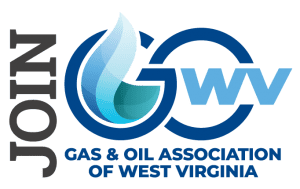Dennis Xander, from the Independent Oil and Gas Association of W.Va. (IOGA), spoke to the Rotary club May 20. He is part of a campaign sponsored by the Just Beneath the Surface Alliance to provide the public with an in-depth look into the natural gas industry.
Their goal is to be a source of information and two-way communication on the subjects of economic benefits, environmental standards and regulations, safety and the future on energy in the state.
He said things have changed since President Jimmy Carter’s administration, when the Fuel Use Act of 1978 made it illegal to burn gas to generate electricity. President Carter was convinced that oil and natural gas were running out and encouraged more use of coal. Today, coal is lagging and the Environmental Protection Agency (EPA) is killing the industry.
Now, the U.S. produces more oil each day than Saudi Arabia. Low domestic natural gas prices have led to savings of almost $250,000,000,000 for natural gas customers over the past three years, and residential gas rates in W.Va. have declined 45% over the same time frame
The U. S. has one of the largest natural gas reserves in the world. The Marcellus Shale is the second largest natural gas field in the world (source Penn State University) and the Marcellus and Utica combined is likely the largest gas field in the world.
Fifty-three W.Va. counties have oil or natural gas operations, and all fifty-five counties benefit from state severance taxes paid by the industry. More than $600,000,000 in severance and property taxes has been paid in the last three years. Natural gas state
severance taxes were $162,000,000 in fiscal year 2014.
Ninety-three percent of all jobs created in the U.S. since the 2008 recession have come from the energy sector.
Last February, the Marcellus production exceeded 16 Bcf/day, 16,000,000,000 cubic feet of gas a day, with 2.75 million Bbls, 2.75 million barrels of oil a day. That was an eight fold increase since 2009.
The Marcellus/Utica combined gas production currently exceeds 18,000,000,000 billion cubic feet of gas with 3,000,000 barrels of oil a day with many new wells already drilled but waiting for pipelines to be built.
The decline rates are lower than the wells of Bakken, N.D. and Eagle Ford, Texas, indicating greater ultimate recoverable reserves than anticipated and longer well life.
The average annual earnings for oilfield workers in W.Va. are $14,025 greater than earnings for “similar industries” and oil and gas provides 30,000 direct jobs in the state. Every job created in the shale gas sector adds three indirect jobs.
Xander said this is relevant because oil and gas is the only bright spot in W.Va.’s economy and inexpensive, abundant natural gas can revitalize the region’s once vibrant chemical industry and spawn new manufacturing growth as both energy and raw material costs decrease.
Fifteen percent of natural gas is used for commercial heating, 20 percent for residential heating, 35 percent for electric generation and 30 percent for manufacturing raw materials.
Natural gas is comprised of several gases, including ethane which can be cracked into ethylene, a primary feedstock of manufacturing (especially plastics). A cheap, abundant supply of ethylene in W.Va. could revolutionize the economy here.
The first commercial steam cracker was opened in Clendenin, W.Va. in 1921, close to natural gas and oil. But cracking migrated to the Gulf coast as W.Va. oil and gas supplies dwindled, before Marcellus drilling.
Gas was moved from W.Va. to markets in the Northeast. That market is now totally saturated, and gas must be moved to other markets.
There are no alternative markets currently available for W.Va. producers. The sale of natural gas requires pipeline facilities with available capacity and access to markets with new demand. Between 2015 and 2019 major pipelines need to be constructed to access new markets in new places. Gas must be delivered to emerging markets. Dominion’s Atlantic Coast; EQT’s Mountain Valley; M3’s Stonewall; ET Rover’s Rover; and Columbia’s Leach Express are Appalachian pipeline projects in various planning and construction stages.
Zander predicted the gas will come from existing wells in other states in new or existing pipelines and significant new drilling in W.Va. must be started in 2016 and continued. He further predicted until new pipelines are build from W.Va. to new markets, prices will remain flat and small producers will struggle to survive. No significant change is expected until late 2018.
More information can be found at: EnergySpeaksWV.com or Facebook: Just Beneath the Surface
Or follow them on Twitter @JstBeneathSrfce @EnergySpeaksWV
Two hundred seventy-seven people participated in Rotary’s two spring blood screenings. The club is very grateful for local patronage which enables it to give out five $1,000 scholarships, have its annual children’s Christmas party, continue the Halloween party, donate dictionaries to all Lewis County third graders each year, sponsor a boy to go to Boys’ State and a girl to go to Girls’ State, etc.
The Rotary club sent $250 to the Mountaineer Food Bank to help support its efforts to feed the needy

